Japan Trip 13th to 29th October 2007
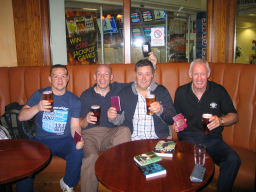 Our
Journey Begins with one for the road (or plane) at Newcastle Airport.
Our
Journey Begins with one for the road (or plane) at Newcastle Airport.
Konan University
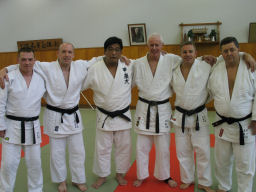
We had an invitation to train at the dojo of Professor Yamasaki 7th Dan, in Konan University. Yamasaki Sensei is a very well respected judo teacher in Japan, who had attended Newcastle University some sixteen years ago.
The training was excellent, and we built up a great rapport with the students whom were most gracious, very disciplined and demonstrated impeccable Judo.
Kodokan

We spent our time in Tokyo at the Kodokan, the original Judo School established by Jigaro Kano in 1882. We were somewhat disappointed that there was no actual Judo training, but were content taking part in a 2 hour randori session, which on the Wednesday consisted of approx 250 Judoka.
Himeji Bodokan

We were invited to view The All Japan Masters Kata and Judo tournaments in Hemeji Bodokan.
The Kata tournament consisted of Nage no Kata, Ju no Kata, Itsitsu no Kata, Kime no kata and Kateme no kata. The Judo tournament included Master Judoka from 30 to 84 years of age.
Dai Nippon Butoku Kai
The Dai Nippon Butoku Kai was originally established in Kyoto Japan 1895 under the authority of the Ministry of Education and the endorsement of His Royal Highness, Meiji Emperor to solidify, promote, and standardize martial disciplines and systems throughout Japan. It was the first official and premier martial arts institution sanctioned by the government of Japan. The Dai Nippon Butoku Kai subsequently became the centre for the proud heritage and elitism of Japanese Budo. It stressed the martial virtues of Samurai warrior and incomparable historical excellence in martial disciplines.
The Butoku Kai had many eminent Judo Masters before WWII, including Haku Michigami Sensei and Kenshiro Abbe Sensei.

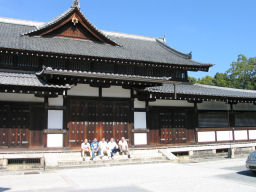
Dubai
We had the opportunity to stop in Dubai for two days on route to Japan.
Kobe
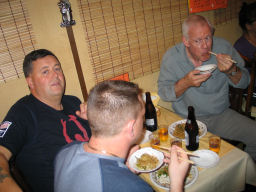
Himeji
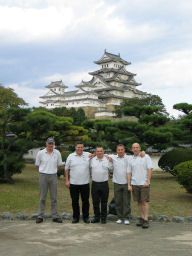
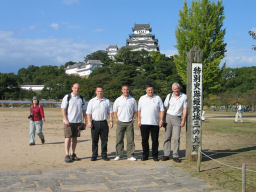
Kyoto

The Kinkaku or the Golden Pavilion began
in 1397 when Ashikaga Yoshimitusu abdicated in favor of his son and built this
villa as a retreat. Upon his death the Golden Pavilion itself became a Zen
temple, renamed Kinkakuji. The temple was destroyed during a civil war in
1467, rebuilt, and destroyed again in 1567, then in 1950 a novice monk,
detracted from religious
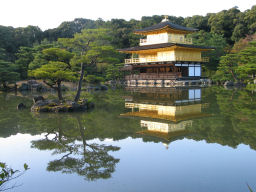 concentration, and burned it to the ground! It was
rebuilt in 1957 and renovated in 1987. The Golden Pavilion takes its name
from the second and third stories, which are gilded inside and out with
approximately 48kg of gold.
concentration, and burned it to the ground! It was
rebuilt in 1957 and renovated in 1987. The Golden Pavilion takes its name
from the second and third stories, which are gilded inside and out with
approximately 48kg of gold.
Nijo Castle, the exquisitely decorated seat of power of the old Tokugawa shoguns. Ninomaru Palace inside the castle complex was built from cypress wood in 1603. Its walls and sliding screens, famously decorated with paintings from the Kano school, are characterized by lavish use of gold leaf and bold-yet-elegant design. The graceful cranes and massive, ancient pine trees depicted on the screens both symbolize longevity, and pheasants represent Japan. The floors were built with special hinge-like metal pieces ("cramps") under each board, so that the smallest amount of pressure on the board's surface created friction between the cramps and the nails holding them in place, causing the floor to creak, or "sing." Why would a powerful shogun commission squeaky floors? To protect him from menacing Ninja intruders in the middle of the night, of course!

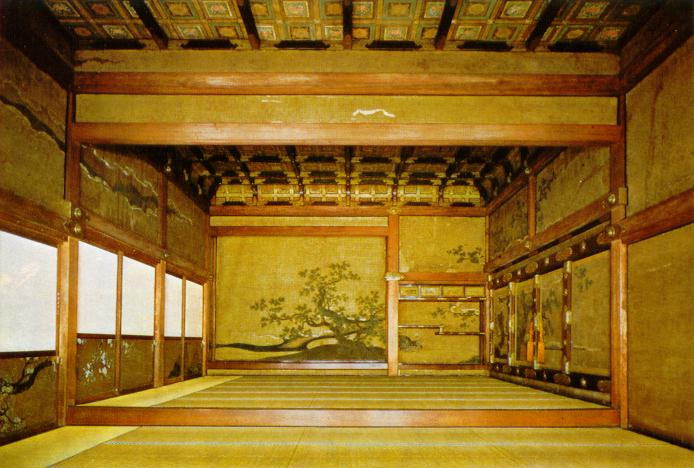
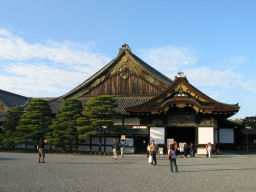
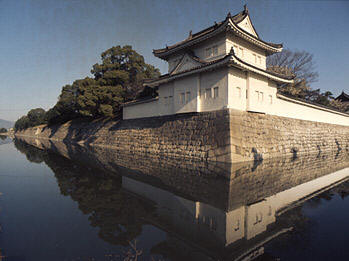
Tokyo
Steve Blower
from GB, and James from Canada whom we met at the Kodokan, navigated us through
Roppongi. The area features numerous bars, nightclubs, restaurants, and other
forms of entertainment including hostess clubs and cabarets. We
ended up at a Thia restaurant the "Mongoose".
Steve had previously trained with Chris some 25 years earlier before he moved to Japan.
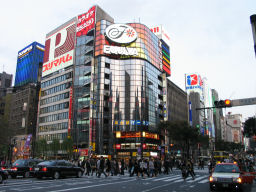
Nara
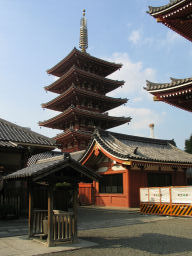
Hiroshima
Hiroshima Peace Memorial Park is built on land surrounding the epicenter of the atomic bomb. There are two museums: one a peaceful dedication to victims and the other a powerful message about the human cost of the terrible weapons unleashed on the city.

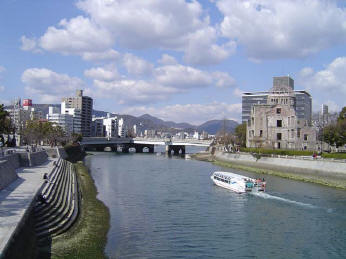
Arima

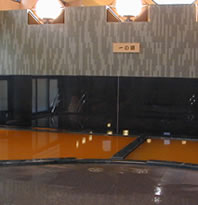

Arima Onsen is a leading onsen resort area in the Kansai region. Kin-no-Yu and various other types of onsen facilities operate open-air baths offering an extensive range of recuperative properties. These baths are indeed rare in the world.
Travel
The Tokaido Shinkansen, connecting most of Japan was inaugurated in 1964 as
the first shinkansen line and the world's first high speed train. These trains
reach speeds of over 300 km/h and are aptly names the Bullet trains, and they
are the best way to travel in Japan!
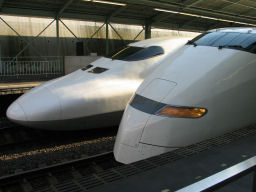
Bonding
It is extremely easy to get along with most people you meet in Japan, all whom we came into contact with were extremely courteous and very helpful indeed.
Pictured Akitoshi Sogabe and Chris Dawson
Sensei's Dawson and Yamasaki
This was our first steps in Japan, where we were met by Mr Takao Kizuki, whom not only organised our introductions to Konan university and Sensei Yamasaki, but also met us personally at the airport, got us to our hotel, and took us the following day to Konan.
For which we are all eternally grateful.
Misc
Clarky aka
"World Champion"
whom spent most of his sightseeing time looking for fish and butchers shops, lol...
Mala, Sending yet another
email home!

The Guys
Catching up on some much needed beauty sleep, all except Clarky of course, he is
happy doing his Carp impression!
Brian and Barry (the Firemen), drooling over an impeccable example of a fire hydrant.
 Look Chris, its a Thimble !!!
Look Chris, its a Thimble !!!
